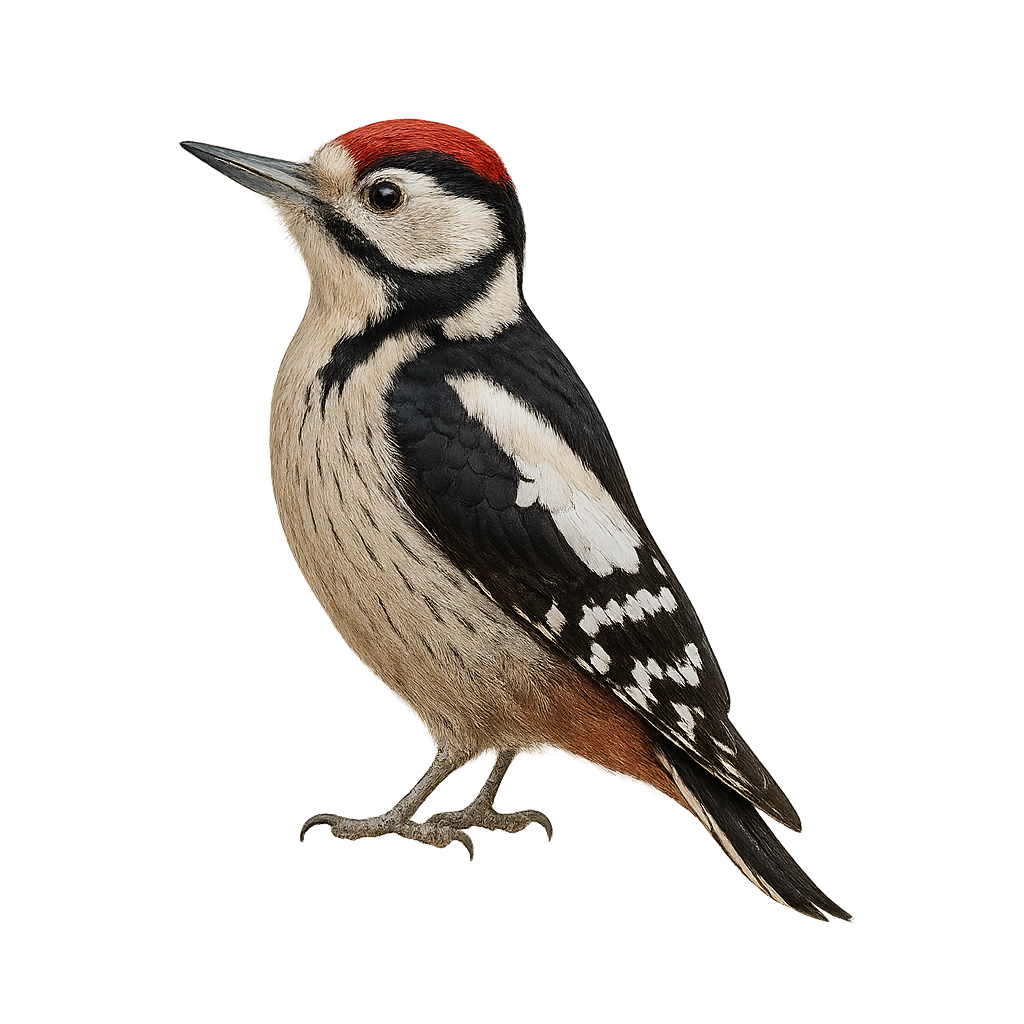Observe and photograph a species in its natural habitat
Learn where and when to observe a species in the wild, how to recognize it in the field, and what habitats it lives in. Get photography tips adapted to its behavior and capture stunning images without disturbing the animal. For full details, open the complete profile in the WildlifePhotographer app.
Lesser Spotted Woodpecker
Scientific name: Dryobates minor

IUCN Status: Least Concern
Family: PICIDAE
Group: Birds
Shyness: Suspicious
Safe distance: 20 m
Breeding season / Courtship: 01.03-31.03
Gestation: 14 à 18 jours
Births: 15.04-18.05
Habitat:
Forests and woodlands
Description:
The Lesser Spotted Woodpecker is a small bird from the woodpecker family, primarily found in deciduous and mixed forests of Europe and Asia. It measures about 20 cm in length, with a wingspan of 30 to 35 cm, and weighs between 30 and 40 g. Its plumage is mainly black and white, with a small red patch on the nape, visible mostly in males. The Lesser Spotted Woodpecker is distinguished by its smaller size compared to the Great Spotted Woodpecker and its foraging habits. It primarily feeds on small insects found under the bark of trees, using its beak to strike quickly and its long tongue to extract the insects. It is an excellent climber and spends much of its time in trees. Although its population remains stable, this species may be affected by habitat loss due to deforestation.
Recommended lens:
>=400 mm
Photography tips:
Approach slowly and discreetly: The Lesser Spotted Woodpecker is a shy bird, often more difficult to spot and sensitive to disturbances.
Photograph early in the morning or late in the day, when the light is softer and the woodpecker is more active in its search for food.
Capture its foraging moments: This woodpecker uses its beak to drill into tree bark in search of small insects. Take advantage of these moments to capture its unique behavior.
Be patient: The Lesser Spotted Woodpecker is more often seen on tree trunks or in wooded areas. Wait quietly for it to settle in a good position for a natural shot.
The Lesser Spotted Woodpecker is a vulnerable species, especially due to the loss of its forest habitat. It is important to respect its natural environment and not disturb its nesting or foraging sites. Follow local conservation recommendations to protect this rare and fragile species.
Ready to take action?
Choose your platform and start your free trial today



